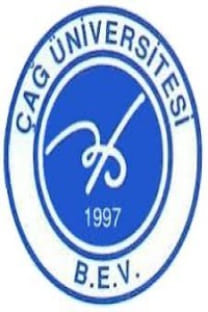FAYDA TEMELLİ BÖLÜMLENDİRME: ANTALYA ÖRNEĞİ
Araştırmanın amacı; Antalya’yı ziyaret eden turist pazarını yaz tatilinden bekledikleri faydalara göre birbirine benzeyen gruplara ayırmak ve bekledikleri faydalar açısından farklı turist profillerini ortaya koymaktır. Araştırmada anket tekniğinden faydalanılmıştır. Anket, Almanca, Rusça, İngilizce ve Türkçe dillerinde, 20-23 Ağustos 2007’de, Antalya’da tatilini yapıp ülkesine dönen turistlere, Antalya Hava Limanında yüz yüze uygulanmıştır. Araştırmada yapılan faktör analizi sonucunda, 9 faktör elde edilmiştir. Kümeleme analizi, iki pazar bölümü üretmiştir. Yapılan t-testi analizi, iki pazar bölümünün arasında tüm faktörler itibariyle anlamlı (p<0.000) farklılık olduğunu ortaya koymuştur
Anahtar Kelimeler:
Turizmde Pazar bölümlendirme, Beklenen Fayda, FaktörKümeleme-Ayırma-Ki-Kare Analizleri, Post-Hoc Metodu, Bırak ve Topla Yöntemi
A Benefit-Based Segmentation: A Case of Antalya
A Benefit-Based Segmentation: A Case of Antalya Absrtact: The aim of this studyis to seperate tourists visiting to Antalya into similar groups based on benefits they sought from a summer holiday and to identify tourist profiles based of those expected benefits. To collect data a questionnaire was developed and utilized in the study. The questionnaire, in four languages (Turkish, German, Russian and English), was applied to departing tourists during 20-23 August 2007 at Antalya International Airport using a face to face technic. Factor analysis revealed 9 different factors among summer tourists visiting Antalya. On the other hand, TwoStep Cluster analysis produced 2 market groups. T-test revealed a statisticaly significant difference (at p<0.000) between the two identified clusters
Keywords:
Market Segmentation in Tourism, Benefits Sought, Factor AnalysisTwoStep Cluster-Discriminant Analysis-Chi-Square Analysis, Post Hoc Method, Drop and Collect Survey,
___
- Ball, Stephen; Peter Giakoumis; 2003; “An Empirical Analysis of the Percieved Importance Attached to Destination and Accommodation Attributes”, Anatolia: An International Journal of Tourism and Hospitality Research, Vol. 14, No. 1, pp. 45-78.
- Baloğlu, Şeyhmus; 2004; “The Relationship Between Destination Performance, Overall Satisfaction,
- and Behavioral Intention for Distinct Segments”, Journal of Quality Assurance in Hospitality & Tourism: improvements in marketing, management, and development, Vol. 4, Issue ¾, pp. 149-165.
- Buhalis, D.; 2003; eTourism: Information Technology for Strategic Management, First Editoin, Prentice Hall, London.
- Calantone, Roger J. ;1984; Jotindar S. Johar; “Seasonal Segmentation of the Tourism Market using a Benefit Segmentation Framework”, Journal of Travel Research, Vol. 23, pp. 14-24.
- Chung, Kyoo Yup; Seok Youn Oh; Seong Seop Kim; Seung Youb Han; 2004; “Three representative market segmentation methodologies for hotel guest room customers”, Tourism Management, 25, pp. 429- 441.
- Çakıcı, A. Celil; Murat Aksu; 2006; “Gökçeada’ya Gelen Yerli Turistlerin Beklentilerinin Karşılanma Düzeyine Göre Pazar Bölümlerine Ayrılması”, 2. Ulusal Eğirdir Turizm Sempozyumu, Süleyman Demirel Üniversitesi, Eğirdir Meslek Yüksekokulu, Eğirdir, Isparta, s. 51-64.
- Formica, S. ; Muzaffer Uysal;1998; “Market Segmentation of an International Cultural-Historical Event in Italy”, Journal of Travel Research, 36 (4), pp. 16-24.
- Frochot, Isabella; 2005; “A benefit segmentation of tourists in rural areas: a Scottish perspective”, Tourism Management, Vol.26, pp. 335-346.
- Haley, I., Russell; 1968; “Benefit Segmentation: A Decision-Oriented Research Tool”, Journal of Marketing, Vol. 32, pp. 30-35.
- Hsu, Cathy H. C.; Soo K. Kang; Kara Wolfe; 2002; “Psychographic and Demographic Profiles of Niche Market Leisure Travelers”, Journal of Hospitality & Tourism Research, Vol. 26, No. 1, pp. 3-22.
- Kassarjian, Harold H.; Thomas S. Robertson; 1981; Perspectives in Consumer Behavior, Third Edition, Scott, Foresman and Company, Glenview, Illinoise.
- Kastenholz, Elizabeth; Duane Davis; Gordon Paul; 1999; “Segmenting Tourism in Rural Areas: The Case of North and Central Portugal”, Journal of Travel Research, Vol. 37 (4), pp. 353-363. Kotler, Philip; 2000; Marketing
- Management–Analysis Planning Implementation And Control, The Milennium Ed., Prentice–Hall Inc., New Jersey.
- Lewıs, Robert C.; Richard E. Chambers; Harsha E. Chacko; 1995; Marketing Leadership in Hospitality Foundations And Practices, Second Ed., Van Nostrand Reinhold, New York.
- Mucuk, İsmet; 2001; Pazarlama İlkeleri, 13. Basım, Türkmen Kitabevi, İstanbul.
- Nakip, Mahir; 1994; Pazar Bölümlemesi Ve Basın-Yayın Sektöründe Bir Uygulama, Erciyes Üniversitesi, İ.İ.B.F. Yayınları, No:2, Kayseri.
- Yükselen, Cemal; 2003; Pazarlama İlkeler-Yönetim, Detay Yayıncılık, Ankara.
- Özgen, Özlen; 2002; “Kapadokya’yı Ziyaret Eden Turistlerin Genel Seyahat Motivasyonları ve Tatmin Olma Durumları”, Anatolia, Yıl. 11, s. 22-34.
- Öztürk, Yüksel; 2001; “Türkiye’ye Seyahat Edenlerin Beklentileri Odaklı Pazar Bölümlendirmesi Üzerine Bir Araştırma”, Anatolia, Yıl. 12, ss. 44-56.
- Sarıgöllü, Emine; Rong Huang; 2005; “Benefits Segmentation of Visitors to Latin America”, Journal of Travel Research, Vol. 43, pp. 277-293.
- Tan, Amy, Y. F. ; Ada S. Y. Lo; 2008; “A Benefit-Based Approach To Market Segmentation: A Case Study Of An American Specialty Coffehouse Chain in Hong Kong”, Journal of Hospitality & Tourism Research, Vol. 32, No. 3, pp. 342-362.
- Webster, Frederick E. Jr.; 1991; Industrial Marketing Strategy, Third Edition, John Wiley & Sons, New York.
- ISSN: 1304-8392
- Yayın Aralığı: Yılda 2 Sayı
- Başlangıç: 2004
- Yayıncı: Çağ Üniversitesi
Sayıdaki Diğer Makaleler
FAYDA TEMELLİ BÖLÜMLENDİRME: ANTALYA ÖRNEĞİ
Sevda Sahilli BİRDİR, M Şükrü AKDOĞAN
KÜRESEL MALİ KRİZDE TÜRK BANKACILIK SEKTÖRÜ
ASYA VE ORTADOĞU ÜLKELERİNDE ASKERİ HİZMETTEN KAÇMA SUÇLARI
FİNANSAL PİYASALARDA HEDGE FONLAR: STRATEJİ VE RİSKLER
FİNANSAL PİYASALARDA HEDGE FONLAR: STRATEJİ VE RİSKLER
MERSİN’İN EKONOMİDEKİ ROLÜ VE POTANSİYELİ
ASYA VE ORTADOĞU ÜLKELERİNDE ASKERİ HİZMETTEN KAÇMA SUÇLARI
HOW TO MEASURE RETURN ON INVESTMENT INTO HUMAN CAPITAL DEVELOPMENT
